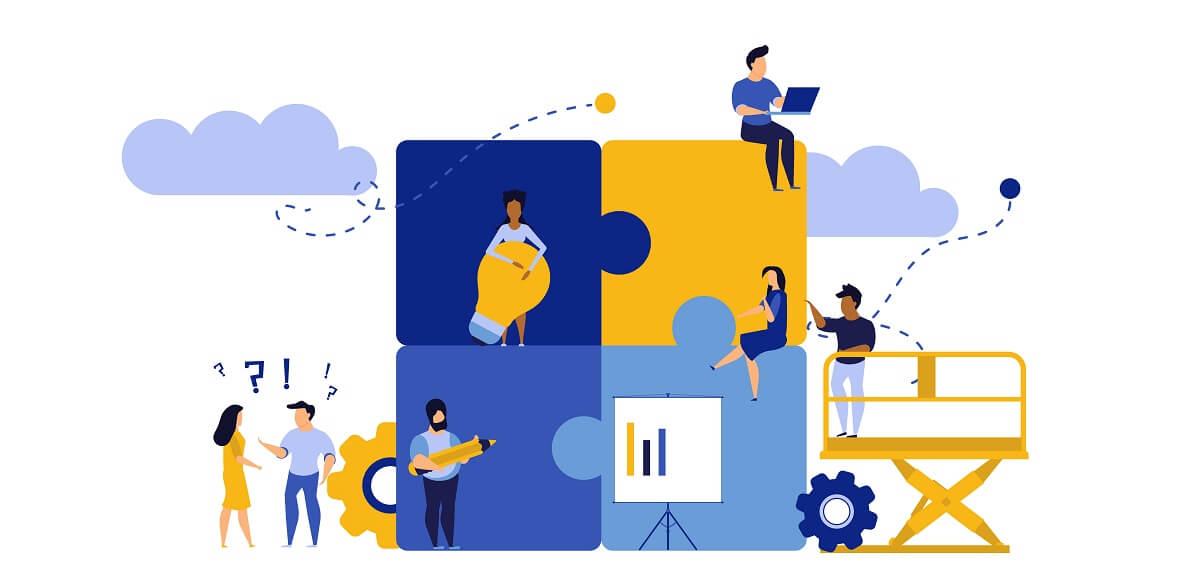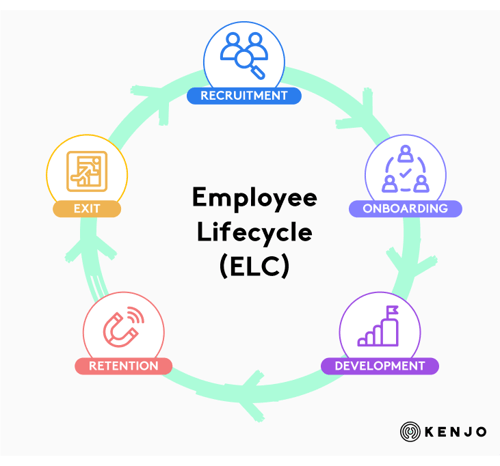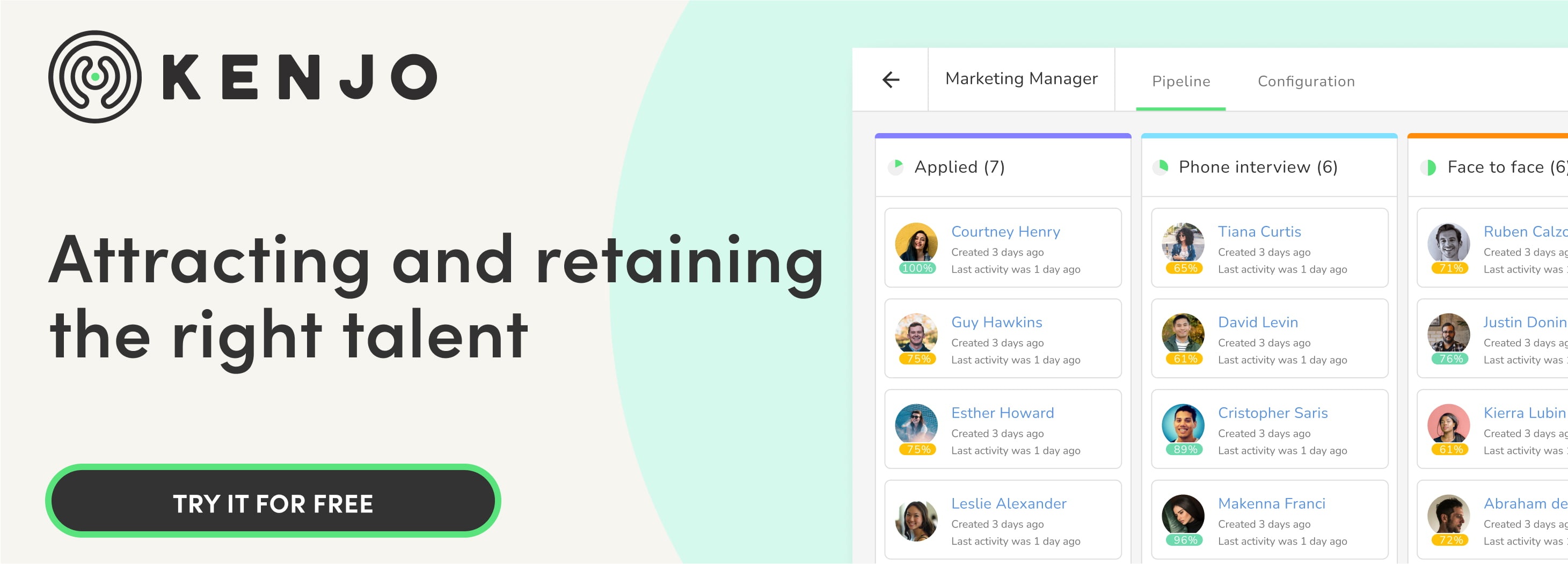Secrets to a great employee onboarding experience

Do you know the difference between successful onboarding and an employee wanting to run home again from day one? Successful employee onboarding is vital, and we explain how to implement the appropriate routines and initiatives into your company.
We've heard the story countless times: nobody knew about the new arrival on their first day of work, and that they were only located after making numerous calls to several people. The only one who seemed to know was the managing director, but he was on holiday. And because nobody was kept up to date, no accounts and emails were activated and the IT department were too busy. The initial training consisted of two weeks of studying brochures and making coffee until new instructions came.
We all know what this means for motivation and commitment. Our hearts go out to everyone experiencing a first day like this.
Although most HR leaders and managers know the importance of the first few days of work, in practice, the experience can be an anti-climax.
Only about 40 percent of employees interviewed in a workplace study agreed that their employer's onboarding programme effectively retains new hires. Considering that it costs employers 33% of an employee's annual salary to hire a replacement if that worker leaves, it’s obvious that companies should invest in an effective onboarding programme to make newbies feel special and welcome.
So, let’s have a look at how HR departments can do just that.
What makes a great onboarding experience?
We doubt there are many HR managers worth their salt who still think their job is done when they’ve recruited the right candidate. Because the onboarding stage is even more important than recruitment. Newcomers must be nurtured and cared for if the company wants to keep them. Think about mentorship rather than competition.
So to kick-start a successful employee experience from the start, you should define specific onboarding processes for new employees and incorporate them into your daily routines. This way, you make your highly sought-after employees feel right at home in your company and get them through their probation period. Here are some things to consider:
- Communication.
- Tools and technologies.
- Schedule it.
- Employee perspective.
- Building loyalty.
- Legacy building.
1. Keep the communication channels open
We can’t stress this enough: communication really is key. Stay in touch with them, make them feel like you’re really excited you’ve joined them to help your company succeed. After all, you’ve just spent a lot of time and energy on finding the right candidate!
- Send your new employees their employment contract as soon as possible after they’ve accepted the job.
- In the time between acceptance and the start of the job, keep in touch with your future employee or make sure that their future supervisor does. In large companies, there are often events for newcomers, in small companies a personal invitation for a coffee or lunch can work just as well.
- Inform colleagues in good time that a new employee is joining to get their future team in the right mood. For example, they could start by inviting their new colleague to lunch.
- Have your colleagues befriend them on LinkedIn before they start, so they get to meet their new colleagues online.
- Create buy-in by showing each employee how their role fits into the organisation. Share their potential impact with them and how they will contribute to the big picture, BEFORE they’ve even started. You can do this via Org charts.
- Good communication becomes even more important in the onboarding processes of employees remotely.
- To facilitate all these tasks you can use a digital employee experience software.
2. Tools and technologies
As mentioned, there is nothing more frustrating than an onboarding experience where you sit at your new desk, IT has forgotten to set up your accounts, or your new computer hasn’t arrived yet. You kinda feel like a Formula 1 driver whose engineering team forgot to fill up the tank. Yikes! You don’t want that.
Remember, you want to make your new hire feel like a million dollars. Make sure that your new employee’s arrival is logistically well-prepared. Check that they have:
- A prepared workstation.
- A working PC.
- A working email address.
- A connection to printers.
- Their own login to the CRM.
- Licenses, etc.
3. Schedule it
Prepare a structured schedule for your new employee that covers the time period from day one through the end of their probationary period. This will set expectations for both the employee and the organisation.
A welcome pack helps new employees to find their way around more quickly and effectively. Contents of the package could include:
- Job description.
- Plan for the first week.
- Documents about the company.
- Org chart.
- Presentation of the most important colleagues and contact people.
- Keycards and employee ID cards.
- Canteen menu.
- Merchandise from your company.
- Assign a mentor to each new employee to give your onboarding experience that extra special personal touch. And make sure they know it’s their permanent contact person.
4. Employee perspective
Managers are particularly successful when they focus on the motives, views and behaviours of their employees and promote them individually. To achieve this, they should change their perspective more often and take off their leadership hat. Great leaders listen to their employees attentively, try to understand how they think, what they need to work effectively and efficiently. The following questions will help you:
- What needs does your employee have?
- What specific views does your employee express?
- How does your employee behave?
- What results do your employees strive for?
The same goes for the onboarding experience. Putting yourself in their shoes, and considering how it feels to be the new kid on the block, gives your company a huge head start towards making the employee feel heard and valued. Approach the planning and execution of the employee onboarding process as though your new employees were your customers, and never look back.
5. Building Loyalty
The first day of new employee onboarding should be about building employee loyalty. Creating an emotional attachment will encourage commitment. And this is what we all want, right?
Reserve times in your calendar for feedback meetings with your newcomer. Greet the new employee officially on the first day and make sure that they are introduced to the colleagues. Delegate this task if you are not there and let the newcomer know who will receive him.
6. Legacy building
Instil a sense of legacy. Each employee carries the responsibility of continuing and improving the legacy of the organisation.

According to the Employee Life Cycle (ELC), onboarding serves as a basis for retaining employees in the long term. The best way to achieve that is through setting clear objectives and expectations. Be sure to customise onboarding for each new recruit and adapt the onboarding process accordingly. A salesperson, for example, must be received in a completely different way to a business manager.
- Communicate what you expect from the new colleague.
- Explain how they can achieve it.
- Set a timeline with clear milestones to track developments.
- Try to review those goals and achievements every month, and make adjustments if necessary.
Don’t just sit around and expect your newbie to know it all. Be proactive and engaging. A great way to do this is through Kenjo employee surveys to detect any potential underlying issues. Once you are aware of them, you can start reacting accordingly and resolve them.
Improving employee onboarding experience
The first few months will determine whether the new employee really fits into the team, gets involved, and can deliver professionally. During the onboarding phase, the employee will also discover whether his expectations of your company are fulfilled or not.
This phase is vital, but with a bit of goodwill and strict onboarding processes, it’s easier to make new employees feel part of a team, and an even bigger cause. After all, it’s only human to want to feel heard and valued, and putting ourselves in their shoes shouldn’t be that difficult. We’ve all been there.


